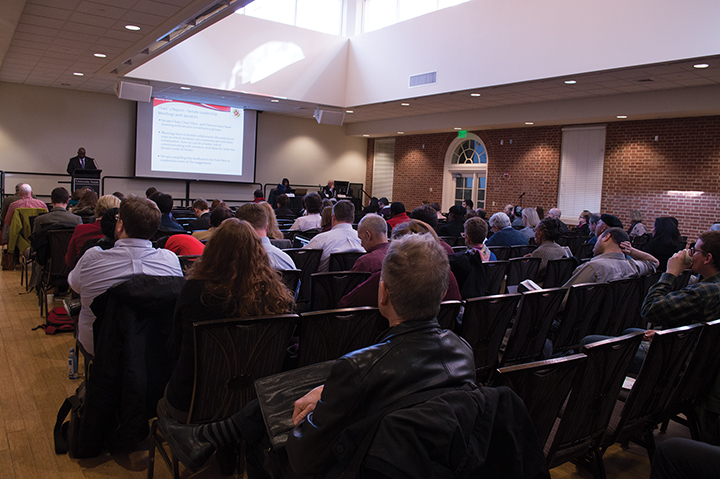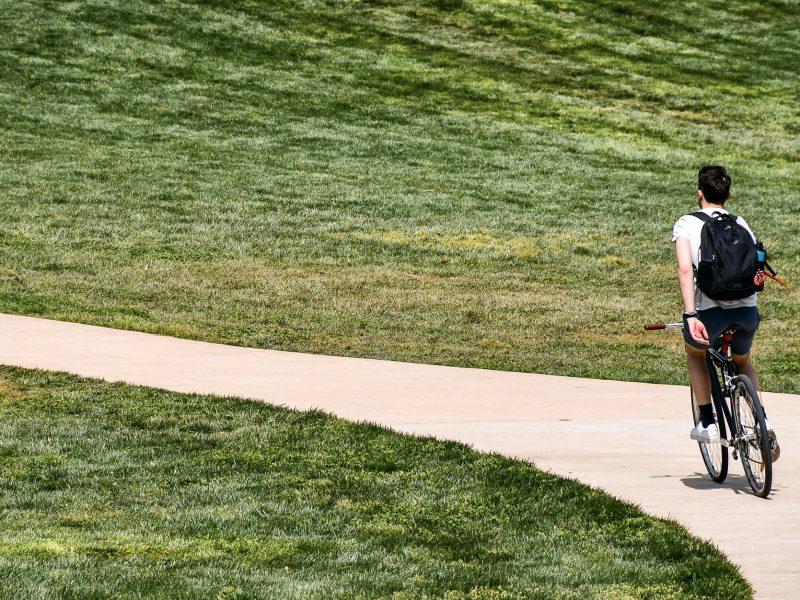The University Senate voted to support the 2016 Strategic Plan update Thursday afternoon, which addresses the challenges and opportunities the University of Maryland faces today — a drastic change from the 2008 plan.
The senate voted 74–7 in favor of the plan, with four abstentions.
Looking toward the year 2022, the “Equal to the Best: 2016 Strategic Plan Update” continues to set the path for how this university can be the best public research university, Provost Mary Ann Rankin said.
“We want to be equal to the best universities in the country,” Rankin said, explaining that the 2008 strategic plan jump-started that goal. “Now we want to build on that and move forward.”
The strategic plan would introduce new majors such as digital media and sports management, improve funding for graduate fellowships and recruit underrepresented minority faculty. The implementation is limited in its details, Rankin said, though the university has ideas about how to raise the money needed for the plan, which is estimated to cost more than $575 million.
The strategic plan remains consistent with the mission and action principles established in 2008 but works to build on the changes, Betsy Beise, associate provost for academic planning and programs, wrote in an email.
Since the 2008 plan, this university has created the Honors College and implemented the General Education curriculum, improved graduation rates, reduced the achievement gap and increased research grants. These align with the core themes — which the updated plan still emphasizes — to create partnerships and new opportunities, strengthen the state economy, improve the local learning environment and increase diversity.
The new plan focuses on topics including the university’s move to the Big Ten and the resulting participation in the Committee on Institutional Cooperation; partnerships with the University of Maryland, Baltimore, and the Phillips Collection; greater experiential learning in undergraduate education; and the revitalization of College Park.
“I am quite grateful that the university participated in the update itself,” senate Chairman Willie Brown said. “The plan builds on the strength that we have, acknowledges some of the challenges that we have ahead of us and sets a path for us to address those challenges and move to the next level as a major research university.”
The plan sets goals in nine categories: education; research and scholarship; Greater College Park; partnership with University of Maryland, Baltimore; the arts and humanities; equity, diversity and inclusion; athletics; administrative modernization; and implementation.
“In five years, I think we will hardly recognize College Park,” Rankin said.
Undergraduate representative Adam Berger said he is excited to see how the new partnerships will play out, especially in their research endeavors — but he’s more interested to see how the partnerships themselves will form.
“It’s really good to set goals for the future, and I think that’s all this really does,” said Berger, a junior bioengineering major. “There’s no specific implementation plan. It’s just like, ‘We want to get here.’ Obviously, it all comes down on how they implement it.”
Brown said there are too many variables to predict whether this new plan will actually come to life, but he said he believes it is a realistic one. Regardless, Brown was impressed with the way different facets of the College Park community came together to offer their input.
“It was great to see that people were involved,” Brown said. “We have faculty, staff and students invested in this plan, and these are some exciting times ahead.”



